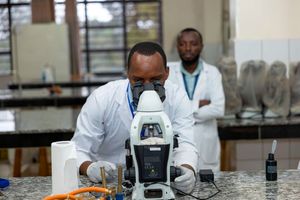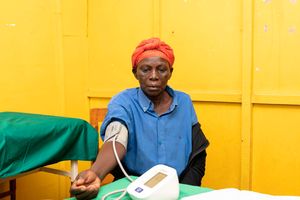Kenya’s fight against malaria is at climate crossroads —but there is a way out

A new mosquito variant is believed to be spreading malaria to non-endemic regions in the country.
What you need to know:
- Globally, 45 million children under five are affected by wasting.
- Nearly 148.1 million children under five are affected by stunting globally; with 44.4 million coming from Africa.
Despite the reported strides in combating malaria-related fatalities within Kenya, findings from the World Malaria Report indicate a significant increase in malaria incidence linked to climatic fluctuations. These trends threaten the gains made in malaria control and pose new challenges to public health systems.
Climate change represents one of the most significant global challenges of the 21st century, influencing various environmental and health outcomes across the world.
Kenya's varied climate, particularly in the western highlands and coastal region, is experiencing increasingly warm temperatures and erratic rainfall patterns. These conditions favour the proliferation of Anopheles mosquitoes—the vectors for malaria.
During El Niño events, characterised by higher than usual temperatures and rainfall, there is a marked increase in malaria cases. These climatic anomalies directly link to spikes in malaria incidences, putting immense pressure on local healthcare facilities and stretching limited resources.
The financial and health ramifications of malaria are staggering, and they underscore the urgency of addressing this issue. Malaria not only depletes Kenya's healthcare resources but also impacts economic productivity.
The direct costs of treating malaria run into millions of dollars annually, not to mention the indirect costs related to lost productivity and labour outputs due to illness or death. Malaria-related absenteeism and reduced labour capacity cost the Kenyan economy an estimated $170 million annually, a significant hit to a developing country's economy.
The emergence of Anopheles Stephensi, a new mosquito vector adept at surviving in urban environments, is compounding the challenges. Originally from Asia, this mosquito has adapted to the warmer urban settings of Africa, sidestepping traditional water-based vector control measures. This adaptation threatens to escalate urban malaria cases, previously a lesser concern compared to rural areas.
Efforts to combat the dual challenges of malaria and climate change in Kenya are ongoing, with significant investments directed towards enhancing disease surveillance, promoting insecticide-treated nets and improving public health education. The Kenyan government and international donors have invested heavily in climate adaptation strategies to the tune of over Sh105 billion (approximately USD 789 million) in the 2023/2024 fiscal year, which represents a 110 per cent rise from the 2019/2020 fiscal year.
These efforts are crucial but need to be amplified in light of the growing threats. The presence of Anopheles Stephensi and the expansion of malaria into previously unaffected urban areas demand innovative approaches and additional resources.
The situation calls for a robust response that integrates climate adaptation strategies with public health planning. There is a need for increased funding and cooperation to innovate malaria prevention and treatment.
The private sector can play a pivotal role by aligning their business priorities with national health goals, providing critical resources that can amplify our collective efforts. Strengthening these strategies is crucial, not merely for disease control but also for preserving the economic and social stability of the nation.
Moreover, public health education efforts need to be significantly ramped up. The Ministry of Health in collaboration with local government units and NGOs must ensure that communities are well-informed about the risks and preventative measures related to malaria in the context of changing climatic conditions.
Building climate-resilient healthcare infrastructure is equally crucial. National and county governments must prioritise investments in infrastructure capable of withstanding increased cases and the expanding geography of malaria due to climate change. Such proactive planning and integration of climate change adaptation into public health policy are not just necessary for mitigating the impacts, but are essential for the sustainability of health systems in the face of this growing challenge.
As Kenya records rising malaria cases due to climate variability, the just ended World Malaria Day serves as a critical reminder of the need to transform public health initiatives to meet these evolving challenges. This scenario presents an urgent call to action, emphasising the importance of a dynamic approach in health strategy redesign that keeps pace with environmental changes. Strengthening these strategies is crucial, not merely for disease control but also for preserving the economic and social stability of the nation.
Chris is the chair of the End Malaria Council Kenya




